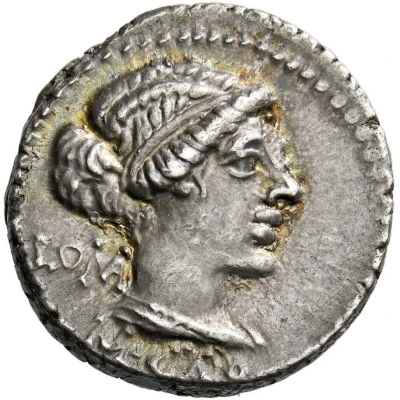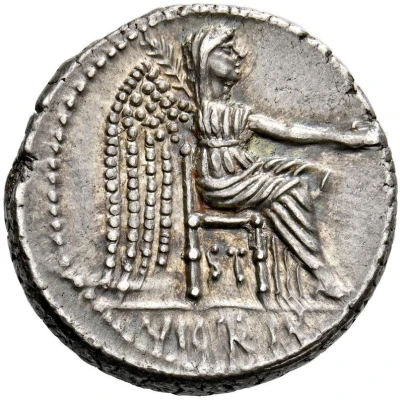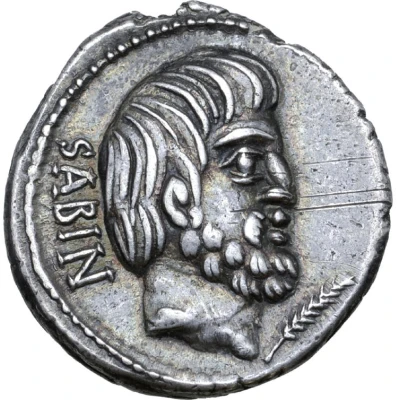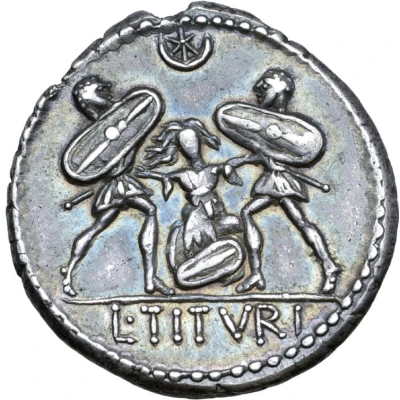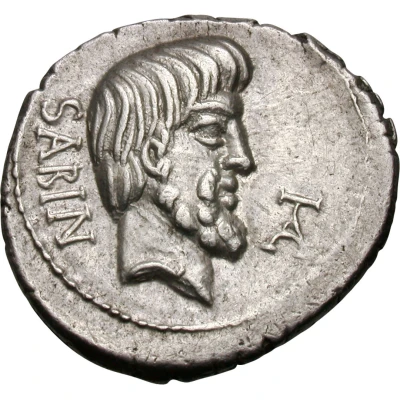
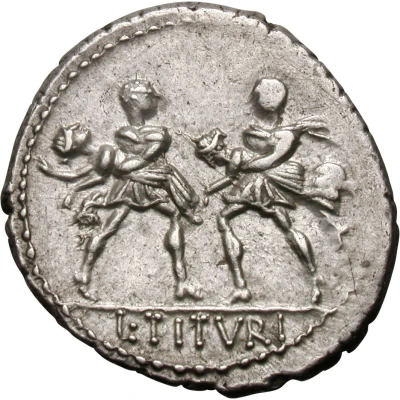

© Heritage Auctions
Denarius Tituria: Lucius Titurius Sabinus; SABIN / L•TITVRI 89 BC
89 BC year| Silver | 3.62 g | 19 mm |
| Issuer | Rome › Roman Republic (509 BC - 27 BC) |
|---|---|
| Period | Republic (509 BC - 27 BC) |
| Type | Standard circulation coin |
| Year | 89 BC |
| Value | Denarius (1) |
| Currency | Denarius of 16 Asses (141 – 27 BC) |
| Composition | Silver |
| Weight | 3.62 g |
| Diameter | 19 mm |
| Shape | Round (irregular) |
| Technique | Hammered |
| Orientation | Variable alignment ↺ |
| Demonetized | Yes |
| Updated | 2024-10-06 |
| Numista | N#66758 |
|---|---|
| Rarity index | 82% |
Reverse
Two Roman soldiers standing facing, looking one another, each carrying a Sabine woman in his arms.
Part of moneyer mark in exergue.
Script: Latin
Lettering: L•TITVRI
Translation: Lucius Titurius
Comment
The Sabines were the women of the Sabine people. At the foundation of Rome, Romulus tries to negotiate with the Sabine people so that the Romans can marry Sabines in order to found their families. The Sabine men refused and, at a pretext festival, the Romans abducted the Sabines women and repelled the Sabines men. After several confrontations, the two finally decide to ally and allow the Sabines women to marry Romans. It is still debated whether the rape of Sabines women really happened or not; Livy excluding any sexual assault, rather stating Romulus offered them the choice to marry Romans and get some rights.The gens Tituria was of uncertain order (plebeian or patrician) and did appear to be of low importance.
Interesting fact
The Denarius coin , which was minted in 89 BC during the Roman Republic, features an image of a jug on the reverse side. This jug is believed to represent the Roman goddess of plenty and fertility, Abundantia, and symbolizes the prosperity and wealth of the Roman Republic at the time.
